Napoleón
Napoleon Bonaparte (1769-1821) is one of the few men to be known as a milestone in world history. Bonaparte’s biography reveals his magnitude in every respect, both to his critics and to his supporters. He was not only a military genius, emperor and reformer who led France to modernity but also the invader who engendered three long decades of incessant wars.
Napoleon was born in 1769 in Ajaccio, the capital of Corsica, the year after the Republic of Genoa ceded the island to France. He enrolled at the military school when he was 10 years old and was commissioned a second lieutenant of artillery at age 15. When the French Revolution broke out, Napoleon’s remarkable service did not go unnoticed and he struck up a friendship with the Jacobins that had a lasting impact on his life.
The first military accomplishment of the young Bonaparte was the capture of the Royalist city of Toulon. From that point, he quickly climbed the ranks, scoring a series of victories in the French Revolutionary Wars. The campaigns of Italy and Egypt acted as the catalysts for his political power and prominence as a military leader. He was received as a liberator in most of Italy, as well as during the legendary Egyptian campaign, where he was joined by scientists, historians and painters on a mission that would transcend the conventional military. During the Coup of 18th Brumaire of 1799, an event that would mark the history of Europe, Napoleon was elected as First Consul. Years later, in 1802, he became First Consul for Life.
The European monarchies began to unite against the spirit of change, initially rising in defiance of Revolutionary France and then forging alliances to crush Napoleon. War became a constant in the Napoleonic era. In 1804, he proclaimed himself Emperor in an attempt to assimilate France into the rest of the European powers and led several campaigns to tear down the coalitions that had risen against him. With the bloody wound inflicted by the Peninsular War and the British intervention, Bonaparte risked fighting on two fronts and initiated the conquest of Russia. He never came to understand what went down in Spain.
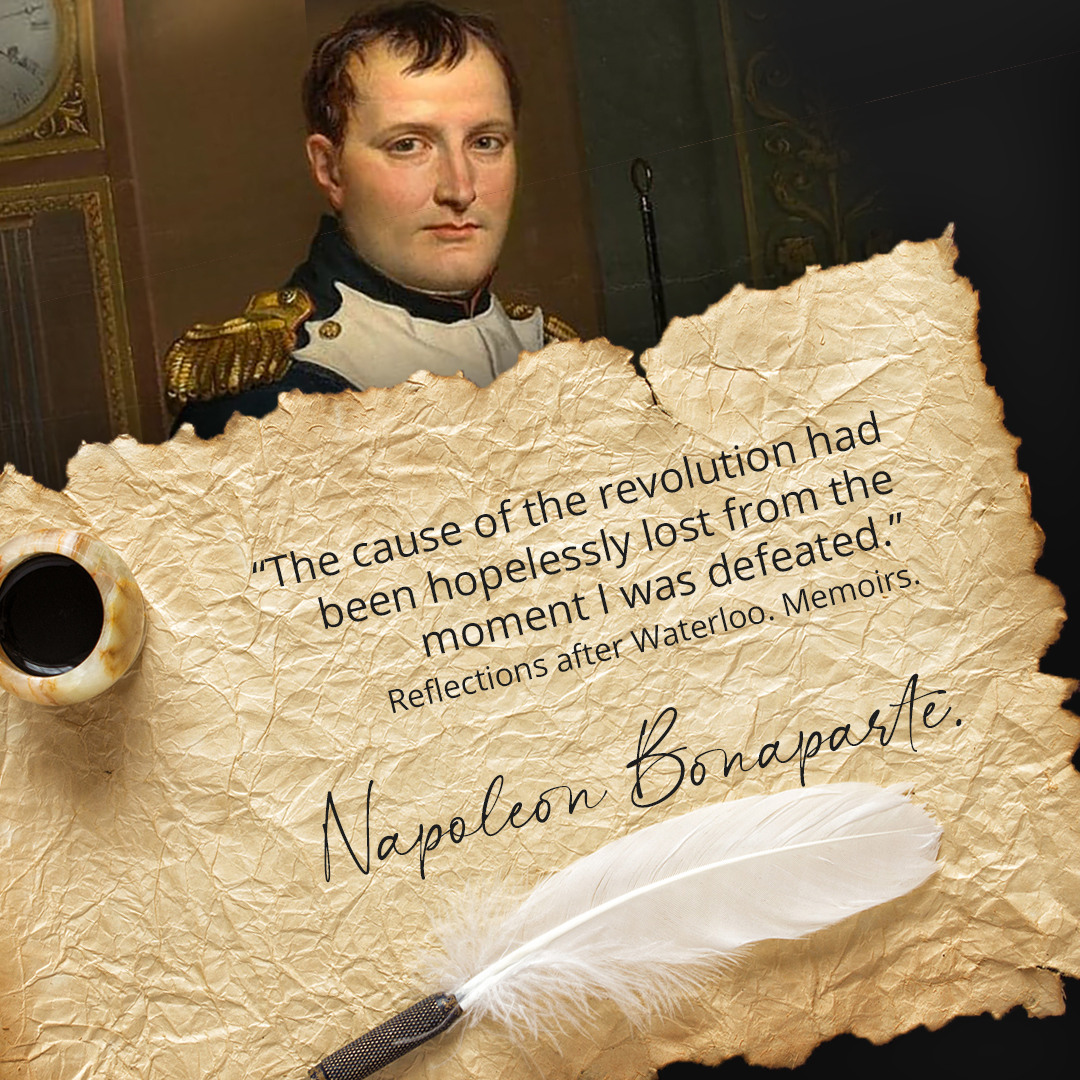
Napoleon’s power began to fade with the destruction of his Grande Armée in Russia, followed by his defeat in the Battle of Leipzig in 1813 and the subsequent invasion of France by the Sixth Coalition. In 1814, Napoleon abdicated under pressure from his marshals and the victorious forces drove him into exile on the small island of Elba, off the west coast of Italy.
But Napoleon Bonaparte’s story had another twist in store, a fate befitting a man destined to become a legend. Napoleon escaped from Elba to return to France and, against what all the political elite thought, the people and the army joined him as he proceeded towards Paris. Entire regiments that were sent to arrest him switched sides when they saw Napoleon. Instead of being detained, he was received with immense support and enthusiasm on his way back to Paris. When Louis XVIII fled, Napoleon regained power. Even though France offered to negotiate peace, the European monarchies formed a definitive alliance.
Napoleon remained Emperor for another hundred days until his final defeat in the Battle of Waterloo on 18 June 1815. He abdicated a second time, but the opponents ruled out an execution by guillotine so as not to make him a martyr. The British exiled him to the remote island of Saint Helena, where he spent the final years of his life. Napoleon Bonaparte died on 5 May 1821 and went down in history as one of the most powerful leaders, comparable only to Julius Caesar and Alexander the Great.
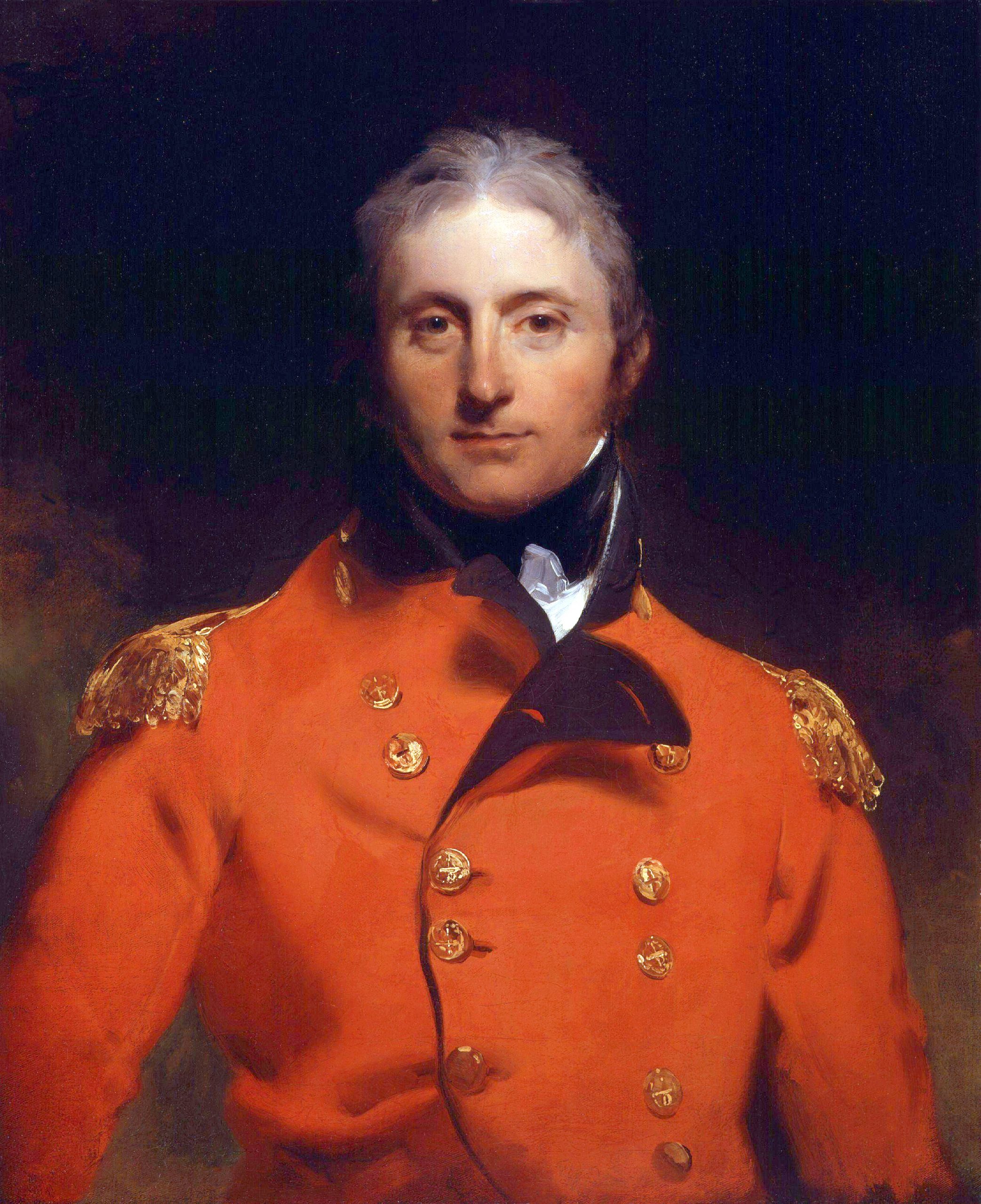
John Moore
Lieutenant General Sir John Moore was born in Glasgow in 1761 and died in A Coruña in 1809 during the Battle of Elviña. Moore joined the British Army at the age of 15 and began to rise through an extensive career spanning Menorca, the American War of Independence, the invasion of Corsica, the West Indies, and the Irish Rebellion of 1798.
Moore was a distinguished military commander and a humanitarian. He was known for his training reforms and for being the first British general to treat his soldiers with fairness and respect. Sir John Moore is one of the greatest legends of the British Army who marked a milestone in military history by ensuring the escape of his troops when they were being pursued by Napoleon’s Grande Armée.
At the beginning of the war with France, he organised the defence of a section of the British coast in anticipation of a French landing. Once the danger was averted, he served in the Baltic for a while until he was entrusted with the command of the British army in the Iberian Peninsula.
Moore disembarked in Lisbon with the order to establish a bridgehead in Asturias, however, he decided to combine his army with the Spanish forces and go on the offensive. In late 1808, Moore was isolated when the main body of the French imperial army had initiated its hunt. In the weeks that followed, the British soldiers forced their way through the snow-capped mountains of León and the Galician Massif, and managed to enter the Herculine city.
French military historians recognise Moore’s retreat as the Battle of Benavente. The withdrawal is compared to the flight of an army from an enemy country. The Marquis of La Romana denounced the acts of looting and crimes committed by Moore’s troops against the citizens, despite the officers’ attempts to restore discipline. In his letters to the command headquarters, John Moore expressed his astonishment at the humiliation caused by the behaviour of his soldiers during their withdrawal.
The last stage of the evacuation of the troops took place in front of A Coruña, where Moore instigated a defensive battle to safeguard the embarkation, taking advantage of the mountainous terrain in the outskirts of the city. While inspecting the military lines, Moore was struck by a cannonball that fatally wounded him.
The Scotsman fell from the horse but remained conscious, while only his jacket kept the arm attached to the body. “Yes, I am mortally wounded,” he said to Colonel Graham. Moore died hours later at the house of a merchant from A Coruña, surviving long enough to learn of the success of the evacuation and to convey his final wishes.
The Highlanders buried Moore overnight in a makeshift grave at the foot of San Carlos Bastion, and when Marshal Soult seized the city, he had the site inscribed. Today, Moore’s ashes rest a few metres from the original grave, in the monument that was constructed years later in San Carlos Gardens.
There has been a constant debate between the historians and eulogists of different affinities on whether or not Moore should be seen as a hero for escaping with the remainder of his army. The truth of the matter is that, in a hostile environment and despite unfavourable conditions, he managed to save a large part of his army that proved vital during the war. The same soldiers later fought at the Battle of Waterloo. His legendary death in A Coruña, and his desire to be buried there, forged an eternal bond between the city and Sir John Moore.
Marshal Soult
To fairly assess a Napoleonic general, under the long shadow cast by the Corsican, it is important to know the nature of the marshal’s rank and understand how the son of a notary, Jean-de-Dieu Soult (1769-1851), came to deserve it.
Bonaparte had the gift of selecting the right personnel for each task. More than 2,000 generals had participated in the Napoleonic wars and Bonaparte only promoted 26 to the rank of marshal. Except for four honorary appointments, the remaining 22 generals, like Soult, earned their marshal’s baton on the battlefield.
Young Soult was not attracted to the world of law and he enlisted at the age of 16 (1785). During the French revolutionary wars, with the future marshal Masséna as his mentor, he rose from sergeant to brigadier general in a short span of three years. Soult was a skilful military strategist and instructor. He was nicknamed “Bras de Fer” (Iron Arm) because of the rigorous discipline he imposed during the preparation of his expeditionary force to invade England.
Soult received his marshal’s baton in 1804, the year of Napoleon’s self-proclamation as Emperor. Bonaparte knew how to reward his subordinates and created customised titles for them, such as the Duke of Dalmatia held by Soult. In Spain, the British troops who were doggedly pursued by him to A Coruña nicknamed him “Duke of damnation”.
Half of the Marshals of the Empire were wounded on the battlefield. Soult was accused of leading the army away from the front, which was evident from his slow and cautious deployment in the Battle of Elviña. He fought on the front line until he was surrounded by the enemy in Genova in 1800 and tried to break the siege. Soult led an attack on the Austrian lines where he received a bullet in the knee and was taken prisoner. He spent several days in agony in a hospital and this experience traumatised him for life. From that point on, he only supervised his troops in the capacity of chief of staff.
Soult’s biggest flaw was compulsively stealing any valuables that were within his reach. In Spain, he earned another nickname: “The painting-stealer”. Whenever his troops occupied a city, several works of art disappeared from churches and wealthy homes only to reappear on the walls of his residence in Paris.
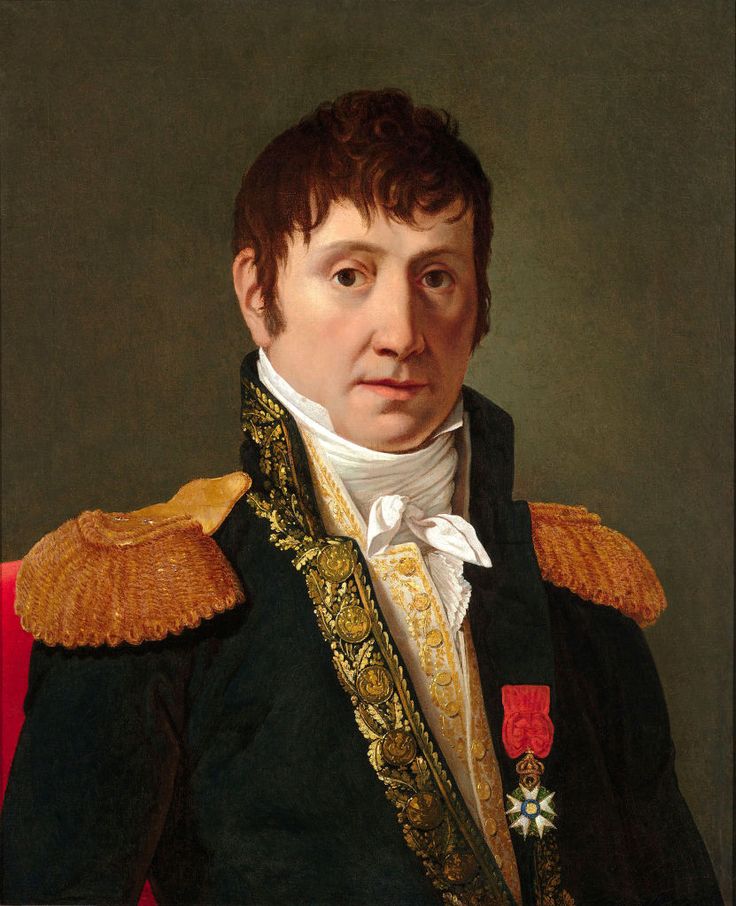
Marshal Soult’s long record of service was marked with achievements and setbacks, from his decisive role in the victory at Austerlitz to the indecision that contributed to the disaster in Waterloo. From the domination of Spain and part of Portugal to the defeat and retreat in the Battle of Pyrenees. From loyalty to the Emperor to his fall from grace and rehabilitation as minister of the new ruling dynasty.
In an imaginary hierarchy of Napoleonic marshals, Soult would be near the apex, perhaps at the same level of merit as the fierce Ney, and right behind the ruthless Lannes, the brilliant Berthier and the undefeatable Davout.
Soult, in essence, was one of the few marshals that Napoleon allowed to act on their own initiative. According to some witnesses of the military preparations for Austerlitz, when the Emperor was giving the final orders to his marshals, he turned to Soult and said: “As for you, Soult, I will only say this: act as usual.”
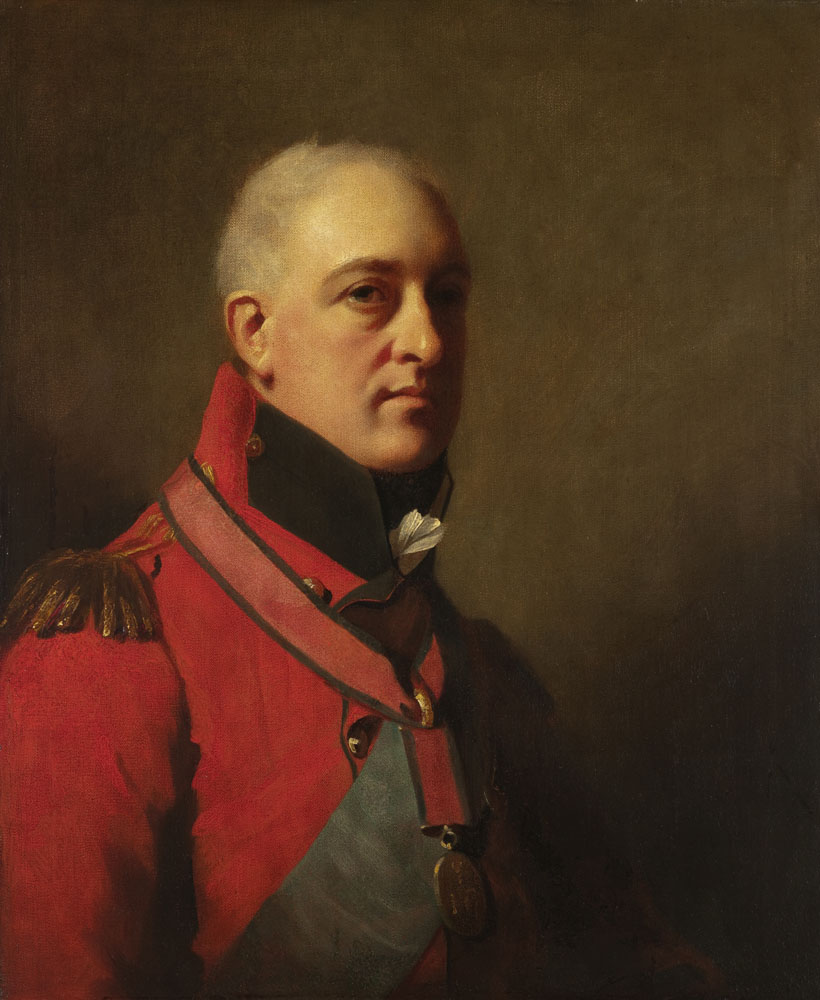
John Hope
Sir John Hope (1765-1823), 4th Earl of Hopetoun, was a Scottish general and politician who played a prominent role in Moore’s retreat and the Battle of Elviña. He also took part in the siege of Cairo and the Battle of Alexandria in 1801, where he fought against Napoleon in the legendary Egyptian Campaign. Years later, he commanded the First Division in Spain during the Peninsular War.
In 1808, serving as one of General Moore’s lieutenants, Hope participated in the British army’s evacuation from Astorga to A Coruña amid terrible winter conditions. The British expeditionary force had fled to the Galician ports to escape the army of Marshals Soult and Ney. The Battle of Elviña of January 1809, also known as the Battle of Corunna, was a desperate attempt to slow down the French army’s advance while the troops embarked in A Coruña.
John Hope had stationed his men at the Camino Real of Betanzos, next to Lord Paget’s reserve. The Scotsman assumed the command of the British Army when General Moore was killed, since General Baird, the second in command, was also severely wounded.
Hope decided to stick with Moore’s original plan. Around 9 pm, he ordered the troops to silently withdraw from the lines and board the ships in the cover of darkness. The British army left strong pickets behind to maintain watchfires and pretend that they were holding the lines to fight the next morning.
When Soult found out about the trap, he changed the location of an artillery unit to begin bombarding the ships. However, they could only damage four of them and most of the British army managed to escape. Hope’s successful evacuation earned him the knighthood from King George III.
In mid-1809, Sir John Hope participated in the unsuccessful Walcheren Expedition in Flanders. He commanded the reserve force under Lord Chatham.
In 1813, Lieutenant General John Hope returned to fight Marshal Soult, this time commanding the First Division under the Duke of Wellington. John Hope also participated in the invasion of France in 1814, fighting in the Battle of Nivelle on the Spanish-French frontier, the Battle of the Nive and the Battle of Bayonne.
During the Battle of Bayonne—the last of the Peninsular War—John Hope was wounded and captured. Nevertheless, the fighting concluded with the surrender of the French forces following the news of Napoleon’s abdication.
Mariscal Michel Ney
Marshal Ney (1769-1815), Duke of Elchingen and Prince of the Moskva, obtained this rank and the titles of nobility fighting on the frontline of the battlefield. When Bonaparte was reinstated to the rank of Marshal in 1804, he chose the 18 best generals to flaunt it, one of them was Michel Ney, the son of a master cooper from Lorraine.
A military man since he was 18 years old, Ney rapidly rose through the ranks on his own merits. Indefatigable and fierce Ney could lead cavalry attacks despite being wounded and protect the rearguard with a handful of men on foot, charging headlong at the Cossacks with a sword in hand. Ney’s temperament earned him the adoration of his soldiers and the enmity of his fellow marshals.
His service record is marked by the most prominent campaigns and battles of the Napoleonic wars, including the battles of Hohenlinden, Friedland, Jena, Eylau, Borodino, Smolensk, Leipzig and Waterloo.
Ney commanded an army corps during the 1808 French invasion of Spain and participated in the pursuit of Moore’s British army to A Coruña. The Marshal spent two years immersed in the terrible attrition warfare in Spain. The guerrillas and the invaders instigated an escalation of atrocities to which the French responded with the repression of the citizens. Ney became one of the most hated figures in Galicia to the point that, even 212 years later, the locals continue to name their dogs after him.
During the Peninsular War, Ney ended up antagonising Soult, Masséna and King Joseph Bonaparte. The conflict even led to a sword fight between the two. That friction and lack of coordination drastically impacted the pursuit between Napoleon’s troops and Sir John Moore. When Soult initiated the attack, counting on Ney’s support, he was left in the lurch. Napoleon relieved Ney of his duties, but his expulsion was short-lived and he ended up leading a corps in the French invasion of Russia.
Disillusioned with Napoleon by his command in the bloody war of Russia, Ney led a group of marshals who pressured the French emperor into abdicating after the Battle of Leipzig.
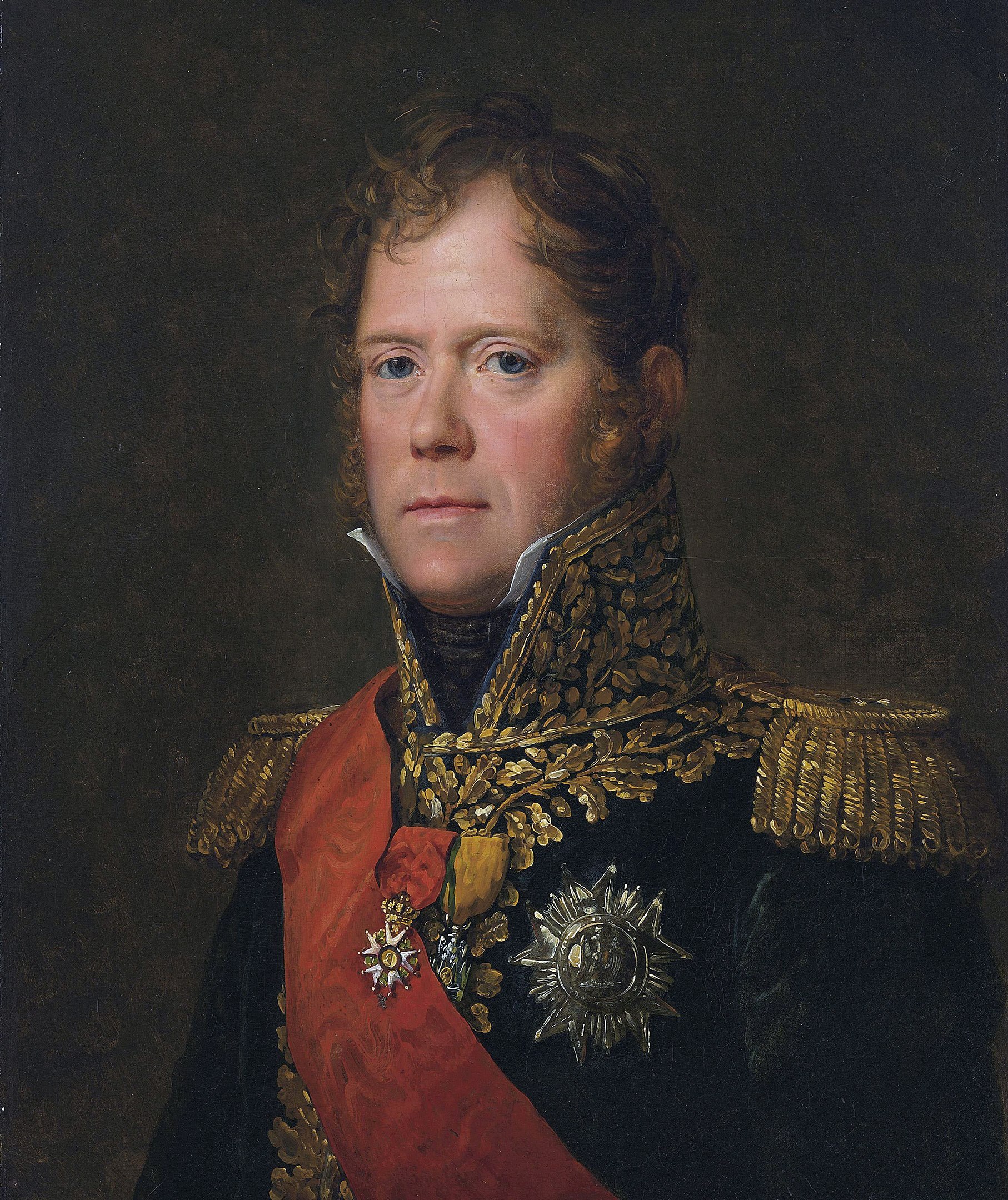
In his heyday, Michel Ney was inferior in power only to the Bonaparte family, the princes, and the ministers of state. However, the old aristocracy that returned to France with Louis XVIII disdained his family for their humble and unprivileged background. Contempt influenced Ney’s decision to return to Bonaparte and became the cause of his downfall.
His gallantry took a turn for the worse towards impulsive behaviour when he no longer held the authority for channelling it. In the Battle of Waterloo, he demonstrated it one last time by acting on his own accord and leading four cavalry charges against the cadres of the British infantry until he had no troops left and was taken prisoner.
Ney was later tried in France for treason and sentenced to execution by firing squad to set an example for the Bonapartists. In a final act befitting his character, Ney refused to wear a blindfold and was the one who gave the order to fire.

Marquis of La Romana
The Majorca-born Pedro Caro Sureda (1761-1811), III Marquis of La Romana, was a captain general who fought in the Peninsular War.
Pedro Caro joined the Spanish Navy in 1775 as a midshipman. He participated in important combats including the reconquest of Menorca and the siege of Gibraltar. In 1793, he entered the army as Lieutenant Colonel, was promoted to Field Marshal the following year, and fought in the War of the Pyrenees. He was made Captain General of Catalonia in 1800 and, during the Peninsular War, he rose to the rank of Captain General.
In 1807, the treaty of alliance with France compelled Spain to provide a military division to protect the Danish coast from a British landing. The Marquis also took part in the expedition, and the Second of May Uprising of 1808 with the subsequent occupation took the Spanish soldiers by surprise who were scattered across military camps in Denmark. The Marquis devised a plan to repatriate his men to Spain with the support of the Royal Navy. Despite Kindelán’s denunciation, Pedro Caro managed to evacuate 9,110 soldiers, while 5,193 were left behind and taken prisoners by the French.
On 11 November 1808, during his time in Astorga, Pedro Caro was appointed Commander-in-chief of the Army of the Left and Captain General of Castile, León, Galicia and Asturias. The same day marked Spanish defeat in the battle of Espinosa de los Monteros and the army had to flee in two columns towards Asturias and León.
General Moore arrived in Spain when Pedro Caro was in León, engaged in training and reorganising what was left of his army. The contradictory war strategies proposed by the generals of the two countries that had traditionally been enemies led to frequent conflicts. The reproaches increased during Moore’s retreat to A Coruña, and the Marquis submitted a report to the Central Junta—the governing body formed during the Peninsular War—with the account of the crimes committed against the people by the British troops, as if the retreat had been in an enemy country.
While most British and Spanish generals of large units engaged in traditional clashes, the Marquis found it pointless to pit his newly recruited soldiers against Europe’s best-trained army, commanded by marshals as competent as Soult. After the British retreat, Pedro Caro went off to Asturias and formed the guerrilla armed forces. During the two years that he commanded his army, the Marquis constantly attacked the French while avoiding the great pitched battle meant to destroy them. Pedro Castro died of dyspnoea in January 1811 when he was leading an advance of his troops from Portugal.
Mendizábal
Gabriel María de Mendizábal Yraeta (1764-1833) was a Spanish field marshal who fought remarkably in the Peninsular War.
Mendizábal was born to a family from Gipuzkoa that had acquired its wealth through trade with New Spain. The young man was equipped with funds as well as the protection of important figures when he arrived in Madrid at the age of 13 to begin his military career. In 1791, he was promoted to Captain and, in 1794, to Sergeant Major—a rank equivalent to major in his day.
Gabriel Mendizábal participated in the War of Rousillon against the First French Republic (1793-1795) and held the position of the Second Commander of the Gipuzkoa Volunteers Battalion, recruited to stop the French invasion of the province.
He distinguished himself under the command of General Ricardos and the Marquis of La Romana during the Peninsular War. Mendizábal obtained successive promotions to Brigadier (1808) and Field Marshal (1809) for his outstanding contribution in the battles of Villafranca del Bierzo and Alba de Tormes.
In 1809, the Marquis ordered Mendizábal to defend the village of Puente de Domingo Flórez, in Cabrera Baja Leonesa. There, Mendizábal resisted the attack of General Franceschi-Delonne’s cavalry and provoked their retreat towards El Bierzo. Once the danger has been averted, Mendizábal proceeded towards the bridge called Ponte Bibei to protect the military headquarters of La Romana.
On 17 March 1809, Brigadier Mendizábal led an attack of 1,500 inadequately armed militiamen against 1,000 French garrisons stationed at the castle of Villafranca del Bierzo. After four hours of bloody skirmishes, the French surrendered the fortress to Mendizábal.
In February 1811, Mendizábal faced a terrible defeat when he ignored the battle plan to break the French siege of Badajoz. The Battle of Gebora was a catastrophe for the combined forces of Spain, Portugal and England fighting against an outnumbered French army. A large number of casualties and losses, in addition to Mendizábal’s poor judgement, smeared his reputation and led to his removal from the position of command in the army.
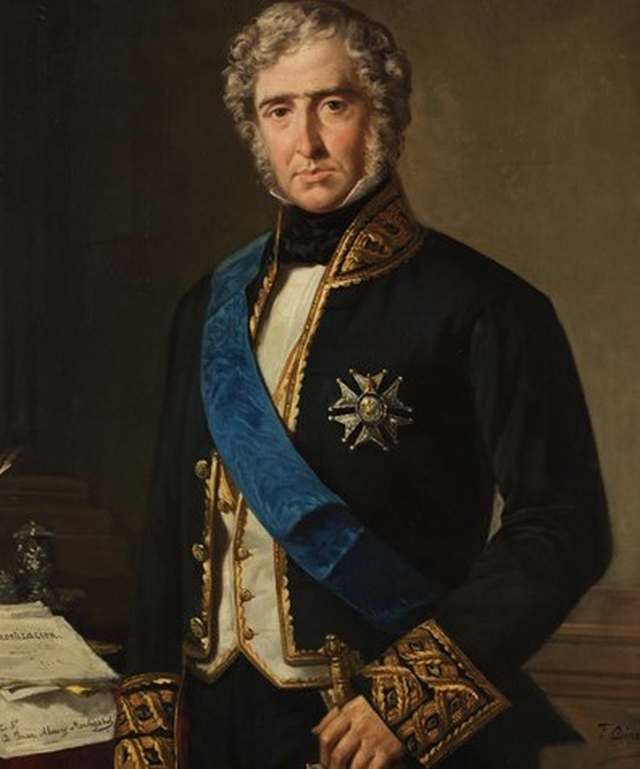
Gabriel Mendizábal was reinstated in the following months for his accomplishments on the Basque-Navarre front and was promoted to the rank of Lieutenant-General. In the final phase of the war, he fought in the battles of Irun, Tolosa and San Marcial.
Mendizábal was decorated with the highest Spanish military honours after the war and was granted the noble title of the Count of Cuadro de Alba de Tormes. In the post-war period, he held different positions in the Army General Staff Office and was the President of the Supreme Court of War and Navy until he died in 1833.
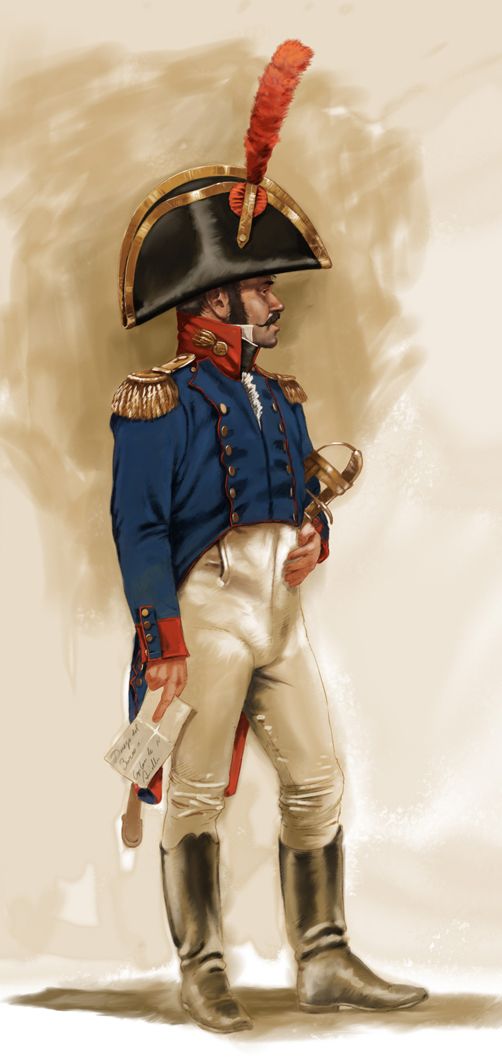
Diego del Barco
Diego José del Barco y de la Cendeja (1779-1814) was an artillery brigadier from La Coruña who participated with distinction in the War of Independence. Diego del Barco was born on 12th November 1779 in La Coruña, calle Real Street number 49. Diego, son of an officer who participated in the Balmis expedition aboard the corvette María Pita, followed the family tradition and opted for a military career.
The young Diego del Barco entered the Royal College of Artillery of Segovia in 1796 and for the following decade climbed the officer's ladder: second lieutenant in 1779, lieutenant in 1802 and, a month before the beginning of the War of Independence, on 2nd April 1808, he obtained the rank of captain. During the war he participated in about twenty battles and engagements that earned him successive promotions and recognitions:
July 1808. Diego del Barco commanded the 20 cannons that formed the Spanish artillery in the battle of Medina de Rioseco (Battle of Moclín). Its cannons protect the retreat of the remaining army from the pursuit of Marshal Bessières' forces.
At the beginning of 1810, with the rank of Lieutenant Colonel, Diego del Barco was wounded and captured by Kellerman's cavalry after the battle of Alba de Tormes. He managed to escape and returned to La Coruña, where he joined the service again on 3rd February.
In October 1811, Diego del Barco commanded the artillery during the French siege of Sagunto. After surrendering the stronghold to Marshal Suchet, del Barco was taken prisoner once again. Diego del Barco escaped again and reached the Spanish lines in Cadiz. From Cádiz, Diego del Barco returned to Galicia and joined the 6th Spanish Army.
- Diego del Barco commanded the Spanish artillery during the reconquest of Astorga and was promoted to Brigadier. He was also entrusted with the command of an infantry brigade and participated in Wellington's final offensive which expelled the invaders from the peninsula. Del Barco managed to enter into French territory during the pursuit of the retreating imperial army.
- Diego del Barco received the mission to expel the French from the fortifications of Santoña and Laredo. Faced with the imminent French surrender, the Spanish government feared that the two Spanish strongholds would be claimed by the British as a new Gibraltar in the Bay of Biscay.
Despite the scarcity of means to surrender the fortifications, Diego del Barco led the assault on Laredo. During the night of 21st February 1814, Diego del Barco was seriously wounded by the fragment of a grenade on the summit of Rastrillar. Diego del Barco was evacuated to Colindres and died of gangrene on 26th February 1814. Laredo surrendered the following day.
Manigault-Gaulois
Joseph Yves Manigault-Gaulois (1770-1809) was one of those rare generals who deserved the esteem of his soldiers, his fellow officers and his rivals on the battlefield.
Joseph Yves Manigault-Gaulois, son of a tavern keeper, entered the army at the age of 18, in 1791. In times of merit-based promotion through the military ranks, regardless of origin, Manigault-Gaulois became the archetypal soldier of revolutionary France.
The continuous wars of the times provided Gaulois with opportunities to show his efficiency, both to the general staff and on the battlefield. In 1792 he was promoted from second lieutenant to lieutenant; the following year he became captain and in 1794 battalion commander. In May 1803, Manigault-Gaulois was promoted to colonel and in August he was appointed brigadier general.
Manigault-Gaulois was noted for his gentlemanly behaviour on several occasions. During the revolutionary wars he saved three former fellow students from the firing squad whom he recognised during the capture of Koblenz. The soldier obtained passports for them and allowed them to escape. Another account states that the soldier received a chariot pulled by 4 horses as a gift for avoiding the looting of a lavish monastery of monks, he sold the gift and distributed the money among his soldiers.
In November 1808, Manigault-Gaulois became commander of the 1st Brigade of the 1st Division of Marshal Soult's 2nd Army Corps. At the end of that year, Brigadier General Manigault-Gaulois received praise for his behaviour and discipline from Napoleon himself during a review of troops in Burgos. The following words are attributed to the Emperor: “General, I am pleased with you. For a long time, I have received nothing but praise for your conduct; shortly you will receive testimonials of my satisfaction."
Shortly after the episode, the 1st Division was ordered to move to La Coruña to destroy Moore's army before its evacuation. During the afternoon on 16th January 1809, Marshal Soult ordered the capture of the village of Elviña, in the vicinity of La Coruña.
The stronghold changed hands several times during the fighting between the 42nd and 50th British line infantry regiments and one of the brigades of the Mermet Division, commanded by Manigault-Gaulois. During his participation in the combat, Joseph Yves Manigault-Gaulois was fatally shot in the head. After the battle, the remains of General Manigault-Gaulois were treated with consideration and regret, and he received funeral honours in Santiago de Compostela.
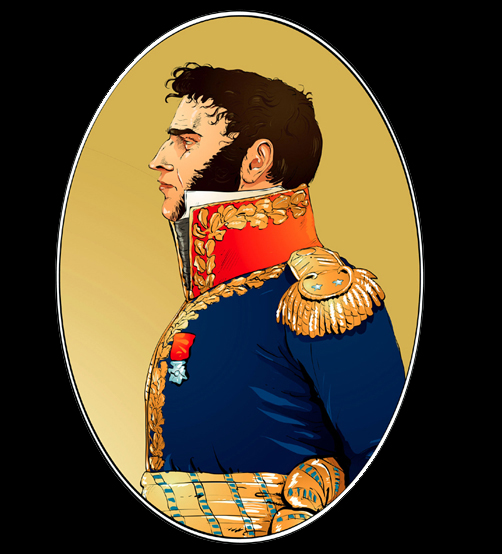
La plaza cambia de manos varias veces durante los combates entre los regimientos 42º y 50º de infantería de línea británica y una de las brigadas de la División Mermet, comandada por Manigault-Gaulois. Durante su participación en el combate, Joseph Yves Manigault-Gaulois recibe un disparo mortal en la cabeza. Tras la batalla, los restos del general Manigault-Gaulois fueron tratados con consideración y pesar, y recibió honras fúnebres en Santiago de Compostela.